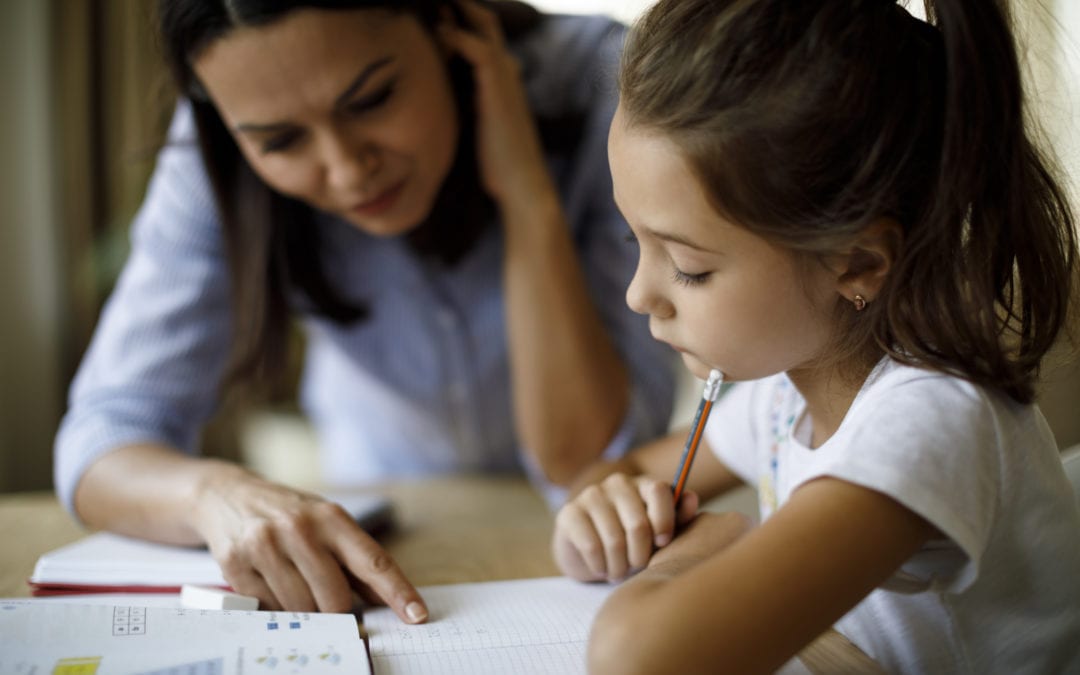
by TutorUp | Aug 21, 2020 | Parents and Home
Preschool age children (3 and 4-year-olds) have needs and challenges as far as readiness for tutoring that older children have overcome. A child who has attended kindergarten is familiar with the concept of “time for learning” as compared to “play time”, while younger children who haven’t been exposed to a “school” or “classroom” environment are not.
According to doctors, the normal attention span for children is 3 to 5 minutes per year of a child’s age. So a 3-year-old should be able to concentrate for up to 15 minutes at a time on a specific task or learning activities. They note that a child’s attention span while watching TV is not an accurate measure of his or her attention span.
At this young age, it’s important to intersperse free play time with time devoted to learning, and every parent needs to determine for her own child what age might be too young for tutoring. Children who are of kindergarten age and older not only have longer attention spans, but are also more accustomed to the concept of sitting still, working on “schoolwork” and listening to the teacher. All of these contribute to their ability to benefit from one-on-one tutoring. However, this doesn’t mean that preschool age children can’t benefit from tutoring that is appropriate to their age and abilities.
Setting Expectations
Younger children who have not attended a preschool, or who have not had any type of exposure to instruction may benefit from short tutoring sessions that focus on activities the child enjoys or has shown interest in like learning letters, reading their favorite books, working on puzzles, and playing with toys that increase hand-eye coordination, improve memory, and teach problem-solving.
Age-appropriate goals for young children include helping them develop a love of learning and a positive impression of school. Building a child’s confidence in their own abilities by choosing activities that they can be successful in will help them when they are faced with more difficult activities in school. One-on-one tutoring can be a huge boost to a child who is lacking in confidence or self-esteem.
Older children may already have identified learning disabilities or developmental delays that a private tutor would be able to address. In a one-on-one teacher/student relationship, tutoring can be personalized to focus on exactly what an individual child needs help with. Since the average classroom in the U.S. has approximately 23 students, it’s very difficult for a teacher to spend time working individually with students. With tutoring, there are fewer distractions for even the most focused students and they are able to have 100% of their instructor’s attention.
Parental Goals
Regardless of the age of the student, parents need to be careful not to impose their own – possibly unattainable – goals on their children. As parents, we all want to see our children succeed in life, and getting a good education is one way to help them do that. However putting too much pressure on a child to excel academically can end up having the opposite effect.
Children who feel inadequate, or that they are somehow deficient, and need remedial help, can quickly develop a lack of self-confidence and self-esteem which can ultimately lead them to dislike school. And if children have to spend too much of their “free” time on homework, tutoring, and other academic activity, they may miss out on the benefits of other kinds of extracurricular activities, family time, and just plain fun time.
Finding the Balance
A trained, experienced teacher can recognize a child’s capacity, their attention span, the areas they need help with, and just how much tutoring is actually beneficial. For this reason, certified, experienced teachers make the best tutors. Simply being a subject matter expert is not enough. Without that training and those teaching skills, a tutor isn’t as capable of helping a child, especially a child who is struggling in school.
Children are each unique individuals with their own abilities and challenges. What works for one child might not work for another. Parents working together with a teacher/tutor can determine when their child is ready for tutoring, how much tutoring they would benefit from, and the best way to proceed to achieve the best results.

by TutorUp | Aug 18, 2020 | Parents and Home
updated – July 2021
We know how frustrating it can be to try to find an expert tutor for an in-demand subject area like math. With some tutoring services, math tutors know they can charge a premium for their skills. This leads to hourly rates for in-person sessions that can soar as high as $200 an hour!
Tutoring should be simple and affordable. For example, at TutorUp, we only work with certified, experienced teachers who know the curriculum standards. Not only are these teachers subject-area experts, but they’re passionate educators — not entrepreneurs out to make a quick buck.
To understand the true costs of working with a licensed professional, read on as we separate the fact from the fiction. Despite what other sites may say, math tutors are much more affordable than you think.
Here’s a closer look at the true cost of math tutoring:
Myth #1: Math Tutors in Urban Areas Charge More
You’ve heard the horror stories. Parents who want to give their students an edge in prep courses or standardized tests spend up to $200 an hour to hire tutors for in-demand subjects like math — especially in major cities like New York and Washington, D.C. At TutorUp, your geographic location does not affect the cost of tutoring.
At TutorUp, our tutors are experienced teachers — not salespeople. They already have deep knowledge in their subject area, as well as the pedagogical training they need to help your student succeed. No matter what grade level your student is in, we can connect you with a tutor who can meet your student right where they are.
When it comes down to it, math tutoring is just like any other subject. You need a knowledgeable, licensed educator who can forge an instant connection with your student and teach the material from your local school district with passion, at a rate your family can afford.
Myth #2: Math Tutors Who Work for Tutoring Services Tack on Fees
Other tutoring services that offer subject-area help typically take between 40-70% of a tutor’s fee as an ongoing commission. This incentivizes tutors who are in high demand, like math and science tutors, to charge more in order to recoup their losses.
At TutorUp, we want to connect you with the very best tutors for your child’s needs. There are no extra fees, and the cost of an hourlong session is based on grade level, and whether the session takes place online or in person. Price ranges from $45 per hour to $65 per hour. When you buy a package with multiple sessions, you can save up to 25%.
TutorUp Math Tutors all Grades
Single 30-minute session online $29
New Student Special Offer! Buy 3 sessions, get a 4th session free! Only $79
Call 877-888-6787 – ask about our package pricing and subscriptions
Myth #3: Math Tutors Charge More Than Tutoring Other Subjects
Not all tutoring services necessarily work with credentialed teachers. As a parent, you might be saving money by choosing an unlicensed math tutor, but you could be sacrificing quality in instruction, too. But our math tutors cost the same as tutors in any other subject.
Also, our online tutors are the same experienced teachers who provide our in-person tutoring. And your tutoring sessions are one-on-one, so your child gets the same personalized attention whether it’s online or in person. We do charge an additional $5 per hour for in-person sessions, to compensate the tutor for travel. That $5 goes directly to the tutor.
When you choose in-person tutoring, we connect you with a tutor who lives nearby, and your student gets the benefit of working with local, passionate teachers who know what it takes to work with students individually, and they’re ready to work with your student at a rate that makes sense for you and your family. TutorUp has found a better way to connect parents with licensed teachers in their area who can tutor their students for an affordable rate, whether in person or online.
Myth #4: Math Tutors Personalize Lessons at a Premium
Just because some entrepreneurial math tutors command a premium for personalized lessons and in-person instruction, we’ve been conditioned to think these are rare skills. But they’re exactly what your student’s teacher already knows how to do! And that’s why we work with experienced teachers. All of our tutors personalize lessons, and it’s included in the cost, not an extra charge.
Maybe your student is a visual learner who needs help plotting a graph. Or maybe your student is a hands-on learner who would rather learn about volume and area by making a miniature model of your city. When a math tutor sees what a student needs by working together, they can customize their instruction methods to meet your student where he or she is at — and keep building on the momentum of each lesson.
Whatever your student needs, personalized teaching can lead directly to the “ah-ha” moments that make for more successful learning. And it doesn’t have to cost a premium.
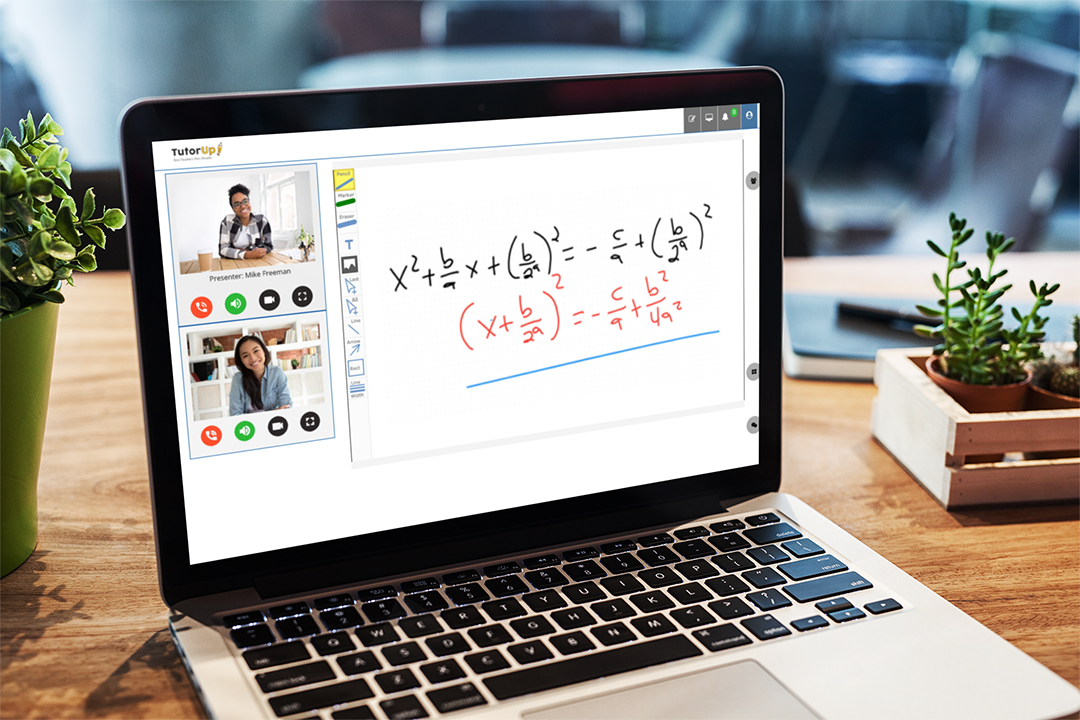
by TutorUp | Aug 12, 2020 | In-Person Tutoring, Online Tutoring
Math Tutoring in the Age of COVID
Check with any news source, and you’ll find articles about the increased demand for private tutors. Not just in math, but in every subject. However, math is the single most popular subject that students need assistance with, followed by physical science, English, and language.
Many tutoring companies are experiencing a higher interest in getting personalized help, especially in math and reading tutoring services.
The COVID “Slide”
There’s solid evidence that the quarantine and forced closing of schools has resulted in a lot of confusion and lost ground for students. The sudden switch to virtual school has caused many students to lose ground in all of the basic subjects, math included. Parents are struggling to keep up with the new routine, and many are turning to private tutors to help their kids stay on top of their daily assignments, while also trying to catch up on material they missed at the end of the last school semester.
At TutorUp, we have experienced an increased demand across the board, not just in math tutoring services, and recently we’re getting more requests for in-person tutoring. We are able to witness first-hand how private tutoring can improve student comprehension, achievement, and confidence, whether online or in-person.
USA Today reports that “Tutoring is one of the oldest forms of education. A growing body of research shows that, when done right, it’s also one of the most effective means of lifting student achievement.“ Further, they address the COVID slide like this, “The toll on students’ attainment and engagement has been dire; it will almost certainly be compounded by the usual slide in learning many kids experience over summer vacation.”
Tutoring is an Effective Strategy For Learning
The Fordham Institute has researched educational interventions, including tutoring. They found that “tutoring is one of the most powerful interventions of all… Indeed, well-structured tutoring programs can produce gains in reading or math that are equivalent to about five months of learning beyond students’ ordinary progress.”
Boosting Student Achievement and Confidence
There is a stigma attached to students who are assigned to remedial classes, or who are identified as having learning challenges. Private tutoring removes this public stigma and provides the one-on-one personalized attention students need to get up to speed with their classmates. As students reach high school, they are increasingly reluctant to ask questions in class for fear of appearing “stupid” in front of their peers. As a result, they stay quiet and fall further behind.
Dr. Robert Slavin, Director of The Center for Research and Reform in Education at Johns Hopkins University states, “Of the single interventions that could be instituted at relatively modest cost and with quite rapid speed, tutoring stands out: The research base for its effectiveness is unusually consistent and strong, the practice is internationally endorsed, and there are many college graduates who will soon look for meaningful employment.”
Check out how much math tutors cost, including our pricing for math tutoring services at TutorUp.
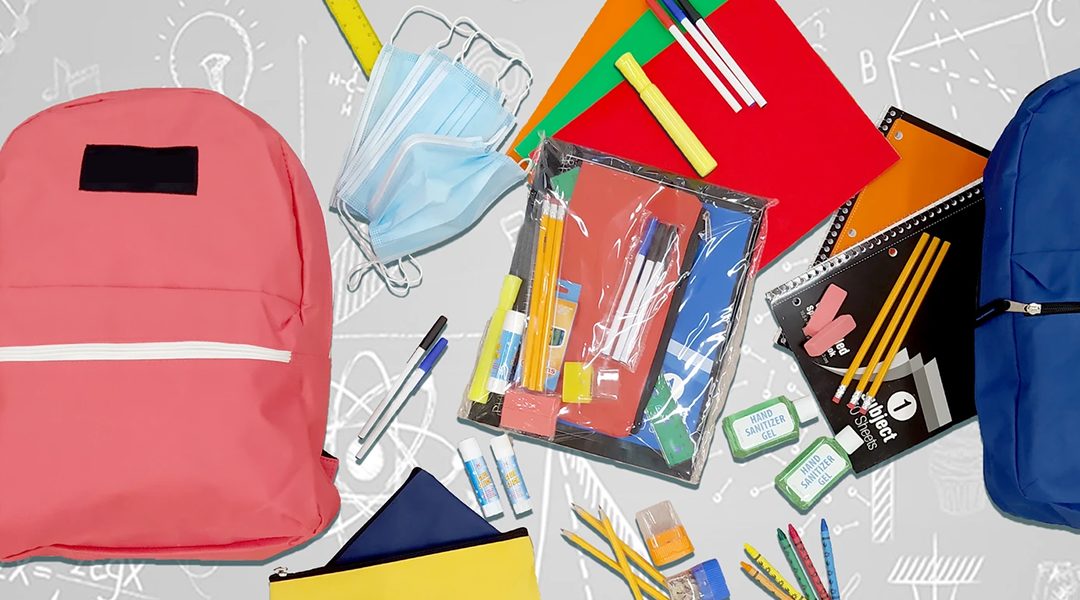
by TutorUp | Jul 31, 2020 | Homeschooling, In-Person Tutoring, Online Tutoring, Parents and Home
Walk through the aisles of Back to School supplies in your local stores and you’ll notice a few new items on the shelves. Face masks, hand sanitizers, antiseptic wipes and other virus-related items have joined backpacks, folders, pens and pencils as essential school supplies, thanks to the presence of COVID-19.
In most states, the decision about whether or not to return to in-person school is being made at the school district level, and there are still districts that haven’t decided on how they will start the new school year. In other states, the governor is deciding. Whatever the situation in your school district, there is sure to be controversy.
To Return or Not Return, That is the Question
Pediatricians and the CDC have advocated for returning our children to school as usual, citing the extremely low incidence of the COVID-19 virus among those under 18 years old. There is also significant concern about the effects on children of being isolated and missing social contact. On top of that are concerns that students have fallen behind academically, and online classrooms have been a poor substitute for being present in school.
Many parents are working, some from home and some outside of the home, and having the kids home every day has been a hardship. Arranging for supervision and trying to manage their children’s online schoolwork has been difficult to do, so many parents are looking forward to having their kids back in school.
But returning to school in person has millions of people worried about the risks. Parents are understandably concerned about the health and safety of their children, and teachers are worried about exposure to the virus themselves, and the possibility that they could carry the virus home to their own families.
Innovation and Creativity Offer Solutions
In light of the uncertainty, parents are stepping up to the challenge and are creating their own solutions. This fall “school” will look very different for many families. Here are 5 options parents are choosing for their children.
Homeschooling
Across the U.S., there has been a surge in interest from families who are seriously considering homeschooling. Many parents discovered last semester that they were more capable than they gave themselves credit for. Schools were scrambling to provide some type of academic activity, and many parents ended up being de facto teachers. And decided they liked it. So rather than depend on the school district to make a decision for the good of their family, parents are going to take on the challenge themselves.
Private School
Private schools are reporting an increase in inquiries from parents looking for options. Private schools, on average, have smaller class sizes and are not governed by the same restrictions as public schools. Many parents need their children to be in school so they can work, and they feel a private school may be better able to implement safety measures for their children.
Pods – In Person “Micro Schools”
Chatter on social media and online parent groups is showing an increasing interest in forming small private groups of students called pods. A couple of families get together and pool their resources, creating a classroom environment in one of their homes. Some pods are all family members, some are neighbors, and they are either sharing homeschooling duties for the group or they are pooling resources and hiring a tutor or teacher to come to their in-home classroom and work with the small group. It’s a modern take on the old one-room schoolhouse concept.
Mini Pods – Online
Very similar to the in-person pods or micro schools, this is a variation that allows for the teacher or tutor to conduct classes in a virtual environment. There are a lot of different conferencing or online schooling platforms that can handle live sessions with a teacher and several students at once.
Regular School Plus Tutoring
For many parents, these options may not work, and they are going to go with whatever their local schools plan to do while supplementing their child’s education with some regularly scheduled private tutoring. Many children lost ground academically when schools were forced to put together an online alternative, and parents are finding that having the one-on-one attention and support of a tutor is the best way to help their kids stay on track. Whether kids are attending school in person or online, the reality of teaching a large group of students at once is that some students are going to fall behind, some students are high achievers and will be bored. For these students, individualized private tutoring is an option growing in popularity.
For the 2020 school year, one thing is certain – it’s going to look far different from what we’ve all gotten used to.
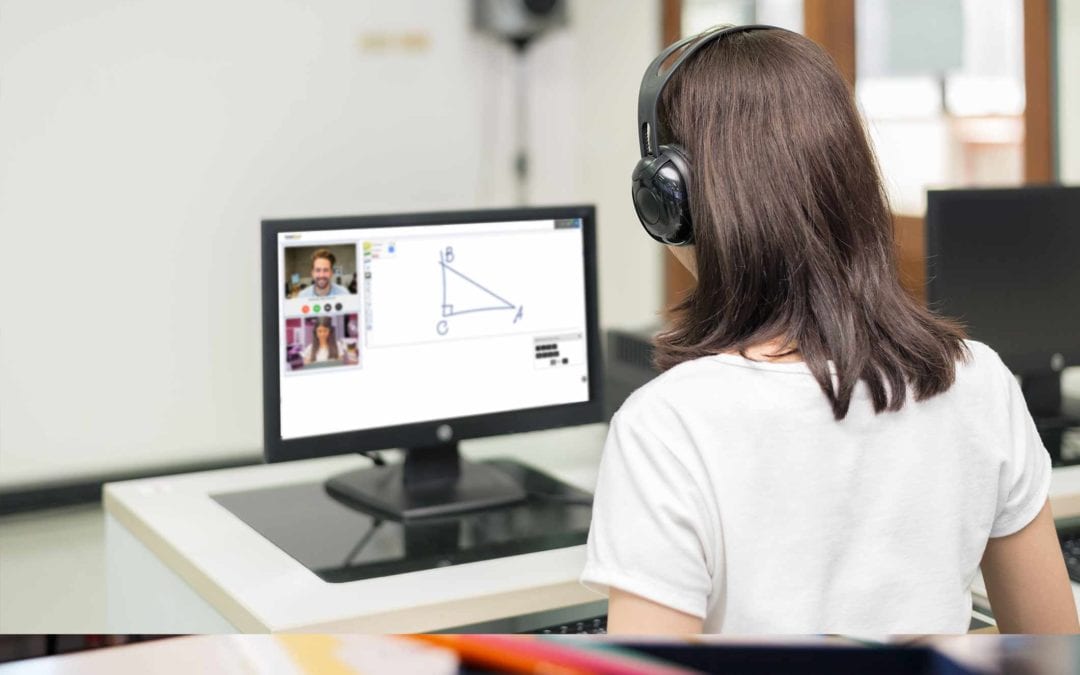
by TutorUp | Jul 24, 2020 | Online Tutoring
Many school districts are planning to open in the next month or two with totally online learning or a combination of some in-person school sessions plus online classes. The terminology for this is kind of all over the place, and it’s confusing.
School districts across the United States are posting their reopening plans and they include:
- Remote learning only
- Full in-person reopening for all students
- Hybrid/Partial
Some school districts will begin with remote learning, but plan to move to in-person school sometime after the beginning of the new school year.
Online classes – or “remote learning” – can mean that the teacher conducts a Zoom-type meeting with some or all of her students meeting together at the same time. Some schools are making videoed lessons available for students to watch whenever they can. Or it could mean that the school has an online platform where teachers post assignments and students post their work, along with live chat or a bulletin board where messages can be posted. There may be live video, and in some cases, teachers will spend a few minutes each week in a one-on-one conversation with each student. Or it could be any combination of the above.
One teacher in New York described the experience like this, “Here I am, at 66, within a year of full retirement, having to learn how to use Google Classroom with 35 first graders at various places in their learning. I feel as though I am attempting to drive on a road that I am simultaneously paving while also following a paper map.” –Janet Kass, teaches first grade, Bloomingburg, N.Y.
Students weigh in on their experience with remote learning
A common complaint from students is that they really miss the social aspect of school and the ability to see their friends in person. But they also miss their teachers and end up feeling isolated and like they are managing their own education. For most students, elective subjects like Art are either being dropped or cut back.
A 13-year-old student from Brooklyn explains, “Me and my friends often have to work for quite a long time, like at least 5 hours on all the assignments. It’s really boring to read the lesson info by yourself and then apply it to your assignments. I feel like this is the hard part. The good thing however, is that we don’t have to wake up at a certain time, so we are at least now getting enough sleep.”
Many students have fallen behind
According to the latest ABC News/Ipsos poll, 59% of parents are very or somewhat concerned that their child has fallen behind academically due to the quarantine and early closing of schools. For many, private tutoring is the solution that helps their child get back on track. Parents, students, and teachers all recognize that when a student can spend time, in person or online, in a one-on-one tutoring session, the academic outcomes prove the effectiveness. Tutoring allows the teacher to customize the learning session to accommodate the individual needs of each student, tailoring the experience to the specific content and learning style the student needs to achieve mastery.
How is online tutoring different from remote learning?
Not all tutoring services are the same, but at TutorUp, online tutoring is exactly like in-person tutoring. One teacher works with one student in hour-long sessions where they are online live with each other, using video and audio, a shared whiteboard, and exchanging documents. The tutor is able to customize learning for each individual student, and the student gets the undivided attention of the tutor, just as they would if they were meeting in person.
If a student is feeling overwhelmed, overlooked, lost, or bored with the remote learning process their school has set up, online tutoring can help them get re-engaged, gain confidence, make up for lost school time, and learn study skills that can help them manage whatever form of remote learning they will have to deal with when school starts again.
To speak with a tutoring coordinator about how TutorUp online tutoring can benefit your child, get started here.

by TutorUp | Jul 21, 2020 | Parents and Home
Whether your teen was able to keep up with school this past semester, or has fallen behind due to missing in-person school and early school closing, you may be concerned about what to do next. More than 59% of parents polled recently by ABC/IPSOS said that they were concerned about their children falling behind, and are anxious about sending them back to school. Here’s what parents need to know about tutoring.
Tutoring is a one-on-one relationship
Teachers are just not able to give significant one-on-one attention to individual students when they have a classroom full of kids to work with. Students who are having trouble with the subject matter fall behind and students who are advanced get bored. Tutoring allows the teacher to have a personalized approach for each student, addressing their individual needs and learning styles.
While it is essential that your student understands the course materials, it’s also important that they feel valued as an individual to help build self confidence. Tutoring can offer this feeling of validation by giving your teen the attention they can’t get in a group setting. Their success is as important to their tutor as it is to your teen.
Tutoring Can Be Tailored to the Student’s Individual Learning Style
Whether a teacher is working with a full classroom of students (or on a zoom call), they have to do their best to present information that all of their students can grasp. This isn’t realistically possible in a group setting with students at various levels of capability, and inevitably some students will fall behind.
Teens are often embarrassed to admit in a classroom setting that they don’t understand the material. They don’t want to call attention to themselves and risk looking like a failure and opening themselves up to teasing or ridicule. So rather than ask questions or ask for individual help, these teen students suffer in silence.
This is where tutoring can provide a tailored learning experience for your student. Tutoring makes sure that your student is getting completely up to speed on what is happening in the classroom. Not only does this help them with their academic progress, but there are other benefits as well.
Tutoring Improves Self-Confidence
Some of these benefits include improved self-confidence. It is inevitable that, at some point, many students may feel left behind or not understand everything that’s going on in the classroom. This can be disheartening, especially for your high achievers. This is where tutoring can be a solution for your student’s self esteem. As they improve academically through personalized tutoring, their self esteem will start to rise and they will feel capable of much more than before.
Teens have many challenges, so having improved self esteem and increased motivation can help with more than just academic success. Being successful in school leads to success in other areas of life.
Busy Parents Need Help Too
Another way that tutoring can help your teen is by taking the burden off your shoulders and relieving you of the role of educator as well as parent. Parents have many demands on their time and attention, including work and other children, and often don’t have the time or experience to act as a tutor to their child. Feeling unable to help can be a huge stressor when your teen isn’t 100% on top of their schooling.
This is where having a dedicated professional to help your teen succeed in school can help you put that concern to rest. Tutoring not only helps your teen, but also alleviates the stress you may feel about the whole situation.
With uncertainty about what the new school year is going to look like, parents and teens alike are feeling a bit anxious. Some personalized tutoring for your teen might be the perfect solution to relieve that anxiety, provide the academic help they need, and help build self-confidence so that whatever challenges they face in school, they will feel ready.
For information on how TutorUp can help your teen, connect with us.

by TutorUp | Jun 30, 2020 | Parents and Home
Most students across the United States have experienced a shorter-than-normal school year so far in 2020. Many students haven’t stepped inside of a school since March, and aren’t sure when school will start again in the fall or what it will look like when they go back.
Different school districts had varying degrees of success with presenting online classes for their students, but the majority of schools weren’t really set up for that. It was still one teacher for a group of students, with even less time to devote to one-on-one support than normal.
A report in The New York Times showed many students falling months behind in their academic progress “with some losing the equivalent of a full year’s worth of academic gains.” The after-effects of the quarantine will continue even after in-person school resumes. “High school dropout rates could increase, researchers say, while younger children could miss out on foundational concepts in phonics and fractions that prepare them for a lifetime of learning and working.”
It has been difficult for some students to be consistently engaged in online school as some had to share access to a computer with siblings or parents who were working from home. The multi-student classroom setup with one teacher leading instruction left a lot of students bored and distracted.
How Tutoring Can Help
Private tutoring, whether online or in person, provides the one-on-one personalized instruction that students need in order to catch up. When a teacher is able to focus on one student at a time, they can quickly assess the student’s needs, design instruction around that, and deliver the kind of learning experience that best suits each child. They are also able to gauge student achievement and tie it together with student and parent goals.
Many free online activities and programs are available that can keep kids busy and involved in “educational” activity, but it is not a substitute for having a certified teacher provide individual private lessons specifically in the subject areas a student is lacking.
Not All Tutoring Services are the Same
As parents struggle with their own work/home demands, and worry about the lost opportunities for learning that their children have suffered due to school shutdowns, more parents are turning to private tutoring to close the gap. Tutoring as a whole has been growing in popularity worldwide, but the introduction of the COVID-19 quarantine has caused demand to explode. As a result, many services are available for parents to consider, but not all private tutoring is the same.
At TutorUp, all of our tutors are certified, experienced, background-checked teachers. Teachers are trained to assess, create lessons, employ multiple teaching methods, motivate, adapt, and evaluate. Besides being subject matter experts in the field and grade level they are certified in, teachers have a commitment to student success. All sessions, whether online or in person, are individualized and provide the kind of one-on-one attention and support parents expect from private tutoring.
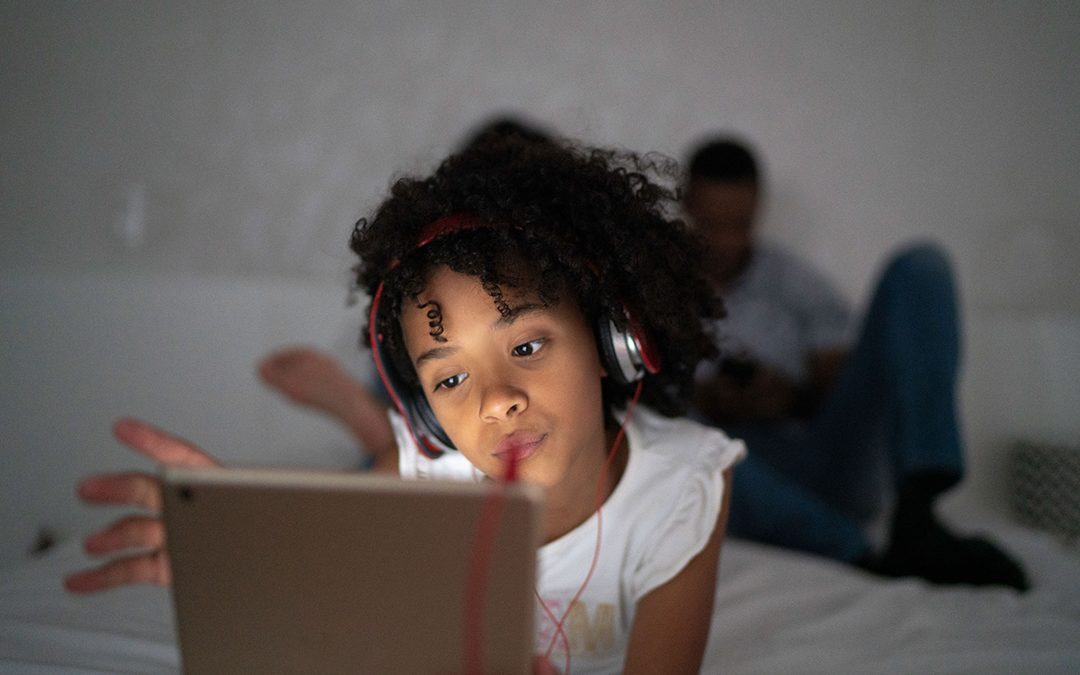
by TutorUp | Jun 15, 2020 | Parents and Home
Now more than ever, we spend a generous amount of time staring at screens. Whether that is for school, work, personal use, or even family fun night, our TVs, cellphones, and computers seem to always be on.
They say too much of anything is bad for you, so how much screen time is bad for you? Are there any negative effects? How can I cut down on screen time?
Here are the Stats
Let’s talk about some statistics first. Adults average 11 hours a day on screens, while children ages 2-5 average 32 hours a week.
Teens, on average, spend about 7 hours a day on screens just for entertainment purposes alone. This does not include screen time for homework or using multiple screens at a time.
To be fair, some of the time we spend staring at screens is unavoidable, most commonly because of work or school, but 7 hours a day for entertainment is in addition to that. Experts advise not to spend over 1-2 hours a day for recreational use during the weekdays, and then bump that up to 3-4 hours during the weekends. Those are some big numbers across the board, but is screen time actually harmful?
Negative Effects
Multiple problems can stem from too much time sitting in front of a screen. According to the Mayo Clinic, “When you sit, you use less energy than you do when you stand or move. Research has linked sitting for long periods of time with a number of health concerns. They include obesity and a cluster of conditions — increased blood pressure, high blood sugar, excess body fat around the waist and abnormal cholesterol levels — that make up metabolic syndrome. Too much sitting overall and prolonged periods of sitting also seem to increase the risk of death from cardiovascular disease and cancer.”
Blue light, such as that emitted from your phone, TV, or computer, can mess up your circadian rhythm (also known as your sleep cycle) when used before bed, which can lead to irregular sleeping patterns.
To top it off, a 2015 survey showed that one third of children felt unimportant or uncared for when their parents used screens excessively in front of them.
The Way Out
One simple way to limit your screen time is to limit where or when screens are allowed to be used. For example, you might have a rule that says, “no screens in bedrooms,” or, “no devices during dinner.” This is easy to monitor for the whole family, rids the problem of blue light before bedtime, and puts the attention at dinner time back on those around you.
Another easy yet effective way to cut down on screen time is to have a weekly, digital detox. What might this look like? Well, you essentially designate one night of the week where no one is allowed to use any of their devices for recreational purposes. It’s that simple.
Does this sound too boring? Then try pairing it with a family fun night, like group yoga, or maybe star gazing, or anything the family might enjoy together. Don’t worry if you can’t think of anything, here are some great suggestions from Parents magazine.
Some families work out ways that kids can “earn” screen time privileges by setting goals like one hour of reading (an actual book), riding a bike, or spending time crafting earns 15 minutes on the tablet for fun. Whatever methods you use, cutting down on screen time is beneficial to the whole family.

by TutorUp | Jun 8, 2020 | Homeschooling
Summer is right around the corner and that means different things to different people. Many families are opting to continue their child’s education into the summer. Schooling at home may be new, but fear not as we go through some tips to make sure your learning process is effective and fun for both you and your child!
Tip 1: Choosing a Subject
Best practices recommend that you choose a subject that your child is passionate about. It is also recommended that you are knowledgeable in the subject as well, but passion is by far the most important aspect.
Without fellow classmates to get your child excited about a subject, passion for the course material will be the main motivating factor for your child. Schooling should be fun and educational for all involved, so keep in mind that your passions might not be the same as your child’s passions.
We recommend making a list of topics to cover and then letting your child decide which ones to go over first. This ensures you are covering what’s necessary while simultaneously giving your child a sense of ownership and drive for the course.
Tip 2: Routines, Routines, Routines!
Children can thrive on routines, and the younger they are exposed to discipline, the better. Not only does this keep them on task and help them take ownership of completing their multiple assignments, but it fosters the idea of being proactive in their own lives.
This idea of discipline and routine can be utilized from the micro to the macro aspects of homeschooling. On one end, having an everyday routine helps both you and your child accomplish the tasks for the day and keep on schedule with the curriculum.
Some parents find that following the public school calendar is helpful while others prefer to establish a year-round school schedule. Either way, a calendar helps your child anticipate and prepare for school time and family time.
Tip 3: You Are Not Alone!
Feeling stuck? Chances are you’re not alone. Many families are taking their initial plunge into summer learning, and online forums are booming with information to help you and your child get the most out of your experience.
Online forums allow you to ask veteran homeschoolers any questions you may have. There is a good chance that what you need help with has already been discussed and answered by others in the forum. So it’s a good idea to check for frequently asked questions, and be sure to check if there is already an answer out there before posting a question.
Some popular parent homeschooling resources online include:
- Homeschool.com
This website dubs itself the “Original Homeschooling Community” and makes that evident with an extensive amount of resources such as forums, free curriculum, and a lot more! - GHFLearners.org
Have a gifted learner? Then look no further than Gifted Homeschoolers Forums. Parents gain access to resources that help them “understand their gifted kids, support for homeschooling families, and online classes for gifted learners - Homeschool for Free – the Facebook Group
Homeschooling doesn’t have to be expensive, and this private Facebook group is dedicated to sharing free, or cheap, resources for homeschooling parents. - r/Homeschool – the SubReddit
Reddit is one massive online forum, with sub reddits for different topics. This subreddit, dubbed r/Homeschool, is your one stop shop for any questions regarding homeschooling.
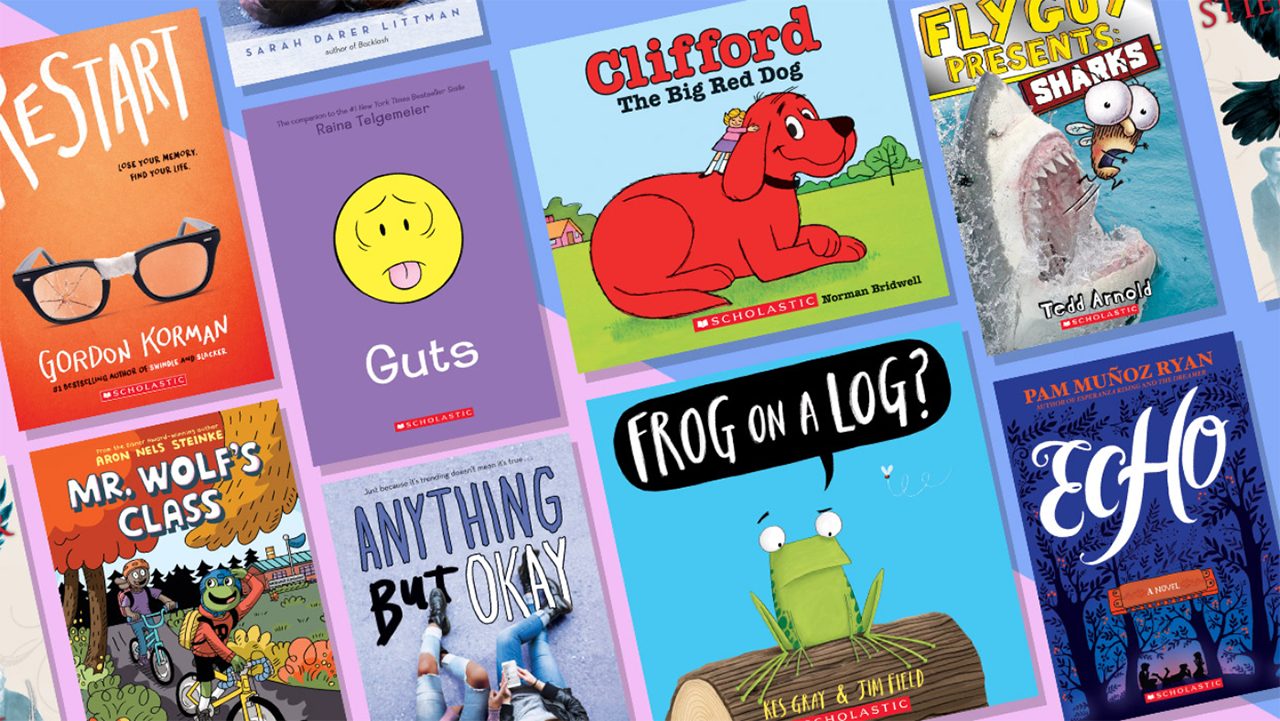
by TutorUp | Jun 3, 2020 | Parent and Tutor Resources
Is your child an avid reader? Maybe you have a reluctant reader, or a child who has some difficulty with reading. Every summer, teachers encourage their students to keep reading, and in some schools, the lists they make are based on the books they will be discussing next school year. These lists differ from school to school, and you can usually find them on your school website.
We’ve put together a list of summer reading lists for you from a variety of sources. The links below include a great diversity of reading material both fiction and non-fiction, for every grade level. Most of these books are available at your local library, local bookstores, can be ordered online, or come in audio book format to listen to.
Help your child find books they are interested in, find a comfy spot where they can enjoy reading, and enjoy some quiet time yourself!
1. Scholastic Books 2020 Read-a-Palooza Summer Reading Challenge Book List
Here’s their downloadable PDF list of books, organized by age, PreK – 12.
2. Texas Library Association
Little Maverick (graphic novels for kindergarten to fifth grade)
Lone Star (fiction for grades six to eight)
Maverick (graphic novels for grades 6-12)
TAYSHAS (fiction and nonfiction for high schoolers)
Tejas (English-Spanish bilingual books for grades five to 12)
Topaz (nonfiction for all ages, preschool to grade 12 and beyond)
3. School Library Journal (SLJ)
SLJ Summer Reading Recommendations
4. Association for Library Service to Children (ALA)
2020 Summer Reading List
5. Teacher Vision
Summer Reading Lists
6. Imagination Soup
Summer Reading List for Kids
7. ILA/CBC Children’s Choices Reading List 2020
Children’s Choices (PDF)
Voted on by 12,500 school children from all over the United States, this list is published by the International Literacy Association and the Children’s Book Council. It is organized by age group and format: beginning readers (kindergarten to grade two), young readers (grades three to four), and advanced readers (grades five to six).
BONUS:
Here are some free activities for your kids to enjoy this summer so they can keep learning without feeling like it’s “school”:
Education.com Free Games & Worksheets
https://www.education.com/worksheets/
Fun Learning Activities to Prevent the Summer Slide
https://www.scholastic.com/parents/books-and-reading/raise-a-reader-blog/summer-activities-kids.html

by TutorUp | May 8, 2020 | Online Tutoring
The entire world is learning a new way of interacting as we practice “social distancing” along with a newfound enthusiasm for frequent handwashing. We are all hopeful that in-person get-togethers will soon return, but in the meantime, as much interaction as possible is moving online.
In keeping with that, TutorUp has just launched online tutoring services so that our students can continue learning while staying home, and our teachers can work from home, observing best health safety recommendations. Our online platform includes video, audio, a shared whiteboard, messaging, and document sharing.
We are proud of the services we provide that set TutorUp apart from other tutoring service companies, including our foundational service which is in-person, one-on-one tutoring provided by local certified teachers. During the coronavirus outbreak, we have made online tutoring available as an alternative to allow your students to stay SAFE as they continue their learning.
Our Tutors are all Certified Teachers
Our new online tutoring provides the exact same quality service our parents and students expect. All of our tutors are experienced, background-checked teachers, and they are still able to work with students in private, one-on-one tutoring sessions. Moving online has given us the ability to serve a much larger audience, and we are finding that many parents welcome the help as they struggle to keep their children from losing ground academically while home in isolation.
Schools are doing their best to continue to keep students engaged, but the reality is that most are just not equipped to deliver their normal curriculum in an online format. Many students still find that they need some one-on-one instruction, and parents are concerned about how difficult things might be in the fall when school resumes.
Online tutoring is convenient and flexible, and doesn’t require our teachers to travel, so we are passing on that savings to our parents and students. Contact TutorUp today to find out about online tutoring and how to get your student signed up for safe, high-quality, affordable tutoring sessions with one of our experienced teacher/tutors.

by TutorUp | May 1, 2020 | Parents and Home
There’s no doubt about it – tutoring works. And, according to a recent study conducted at Johns Hopkins University, one-on-one attention from a teaching assistant or paraprofessional improved students’ performance in the classroom even more than rigorous classroom instruction.
But just because your student receives one-on-one instruction doesn’t mean their test scores will automatically shoot up. To see improvement, you need instruction from a qualified educator who is willing to set realistic, meaningful learning objectives for tutoring time – and who will encourage your student to move past frustration and toward content mastery.
Like any parent, you want to make sure your student receives the best possible instruction. That’s why, at TutorUp, we seek the most qualified teachers who want to tutor your student. They know how to adapt their tutoring styles to individual student needs.
Here are 8 signs you can look for to determine whether your child’s tutor is teaching effectively.
Your tutor sets goals with you
A great educator works from a baseline, observing how a student performs without any intervention and then helps them improve from there. An effective tutor will work closely with you to choose reasonable tutoring goals for your student. You want someone who can meet your student where they’re at right now, and who can consider how to help them level up in their learning, too.
Higher test scores and better course grades are often the aim of tutoring, but make sure you’re seeking improvement relative to your student’s abilities. Too much pressure, and your student could wind up feeling frustrated with their performance – even if their grades do improve!
And don’t forget to consider other, less tangible factors, like increased participation in the classroom, improved focus, or increased feelings of confidence around homework, classwork, and testing. As your student works with their tutor, you should see improvements across each of these areas.
Your tutor uses teacher comments and student feedback to adjust their lessons
Good tutors are flexible, using all the information and resources at their disposal to reach any given student. At TutorUp, we help you put your tutor in contact with your student’s teacher, so the educators in your student’s life are on the same page. If your tutor regularly considers teacher feedback in how they structure their lessons, you know you have a great tutor on your hands.
Student feedback matters, too. Extra homework help isn’t always fun, but tutors can respond to student feedback in various ways to make tutoring sessions lively, engaging, and supportive. Does your tutor change the kind of work they tackle in each session? Have they thought about how your student learns? Do they create a positive atmosphere? Does your student want to sit down with your tutor, even if the work is sometimes difficult?
Your tutor balances positive feedback with clear expectations for work
Students can experience a lot of shame around needing extra homework help, which is why it’s so important for your tutor to make tutoring sessions feel positive and engaging – even when there’s lots of work to be done.
Choose someone who encourages your student as they meet the challenges of individual assignments, but who isn’t willing to let the lesson go out the window if your student balks at the workload. Students need a balance of positive feedback and encouragement with clear expectations about work, so they’re motivated to keep going – even when the going gets tough.
Your tutor starts to take a back seat during tutoring sessions
One-on-one attention for struggling students is invaluable. But it’s also important for students to learn independence in their quest to find the right answers.
If your tutor lets your student figure out content on their own, you can feel good about all the study skills your student is picking up as they work toward content mastery.
You should take note of how your tutor encourages your student to problem-solve, ask questions, read critically, and follow directions. These are invaluable study skills that translate directly to the classroom, including homework time and test-taking skills.
Signs to look for in your student
Your student receives better test scores or grades
Better test scores and grades can be good indicators of whether or not your student has an improved understanding of content with the help of a tutor. But often, improvement in school is because a student’s confidence shoots up, or they’ve learned better study skills from their tutor that help with test-taking or independent classwork.
While your student’s test scores and grades should be celebrated as they improve, make sure to check in with your student’s teacher to see what classroom behaviors have also changed.
Give even more praise for positive indicators like increased participation, classroom leadership, focus, and collaboration so your student knows they’re on the right track.
Your student stops dreading homework time
If homework time at your house is hard, it might be because your student struggles with where to begin – or doesn’t feel confident in their ability to complete work once they do.
One-on-one tutoring sessions with a licensed teacher can help with both of these hurdles. Not only do students learn how to break down homework prompts into manageable chunks during tutoring sessions, but they also get more practice with the content, which leads to feeling more secure in the classroom.
You should start to notice that your student stops dreading homework time or independent projects because they now have new skills – and more confidence – for tackling problem sets and essay prompts all on their own.
Your student receives positive feedback from their teacher
Students who struggle in school do so for all sorts of reasons: frustration, misunderstanding, lack of focus, and poor self-confidence among them.
In the classroom, teachers do their best to make sure as many students as possible understand the material. But some students might just need more attention to cross the finish line, and will feel frustrated or withdrawn in class until they get that extra attention.
One-on-one tutoring can make the difference, giving your student more time to process material, learn study strategies, and feel more confident in their abilities. As your student masters content with your tutor, your student’s teacher should also notice changes in the classroom, like improved participation or focus.
Check in with your teacher to see what changes in behavior they’ve noticed — and ask whether they have any additional suggestions for tactics you can try at home.
Your student can do more work on their own
It’s one thing for a student to master content with the help of a licensed teacher in one-on-one sessions. But it’s quite another for your student to learn the skills and strategies they need to be self-directed learners.
Observe tutoring sessions to see whether your student asks more questions, tries different problem-solving methods, reads critically, and picks apart homework prompts or directions to understand the task in front of them. Your tutor should encourage these strategies – not just hold your student’s hand or be a friendly “study buddy.”
If you notice that your student is using more study strategies – and, in the process, answering more math problems correctly or writing essays with better organization – then you know their one-on-one tutoring sessions have been effective.

by TutorUp | Apr 24, 2020 | Parents and Home
Helping your child who is struggling with schoolwork can be stressful. As a parent, it’s also hard to know when a bad test score is just a blip, and when your child needs help from a trained educator to address an area of concern. At TutorUp, we only hire certified teachers who know how to assess problem areas and teach students the fundamental concepts they need to be successful in the classroom. As professional educators, our tutors know how to make learning more fun – and how to address issues like lack of concentration or motivation that make learning more challenging for some students.
Wondering whether a tutor can help your child? Here are 6 common learning challenges tutors know how to address
1. Difficulty understanding foundational concepts
For most parents, a sustained pattern of bad grades is one of the first signs that their child needs a tutor. But what does this pattern really tell you about what’s going on with your child at school?
Begin by scheduling a time to chat with your child’s teacher, so you can better understand the scope of the problem. Has your child misunderstood fundamental skills that would help them tackle complicated math concepts? Are they struggling with study skills, like memorization or reading directions?
If more study sessions don’t help your child’s schoolwork improve, one-on-one tutoring might be the answer. At TutorUp, we only hire certified, experienced teachers. These subject-matter experts know how to break down fundamental concepts and personalize lessons to give your child the focused instruction they need to succeed.
With your tutor, establish reasonable session goals to address your child’s learning style and specific needs. One-on-one attention and personalized lessons can help struggling students achieve the “ah-ha” moments that lead to real learning – and improved classroom performance.
2. Emotional distress and performance anxiety
While slipping grades can simply be a sign that course material is getting harder, low grades can also signal anxiety, stress, and even depression, says Dr. Claire McCarthy. That’s because depression in teens often looks different than it does in adults – and slipping grades can be a telltale sign of a more serious problem.
This could include “learning disabilities, ADHD, bullying, [or] substance use,” writes McCarthy at Harvard University’s health blog. “But whenever a child’s grades are dropping, it’s important to think about depression as a possible cause.”
Together with your child’s teacher, unpack any signs of troubled behavior at school and home in order to address potential mental health issues. Whether your child is simply stuck on a new concept or there’s something more serious at work, a parent-teacher conference is the best first step to take when grades start to drop.
In addition to classroom and appropriate professional support, after-school tutoring from a certified educator can help students become more confident in their abilities as they work through other issues.
By giving your child the study skills needed to find answers on her own, solve problems, and work independently, a tutor’s positive reinforcement will make a big difference in your child’s academic success.
3. A lack of focus at school or home
Does your student have difficulty following their teacher’s lectures, staying on task during independent reading and study hours, or finishing their work?
They might be struggling with self-esteem, anxiety, or lack of motivation, which could be making their work unfocused. While it’s best to work with your child’s teacher to discover the underlying cause, one-on-one tutoring can often help students develop more confidence in their abilities, which leads to improved classroom performance.
Occasionally unfocused work is the result of a more serious learning or attention disorder. Students diagnosed with attention disorders sometimes experience bouts of unproductivity because they have a different learning style, suggests Adrian Ridner, the founder of Study.com.
“The traditional classroom setting and conventional teaching methods are often not a great fit for students with ADHD so, naturally, many struggle to keep up and maintain good grades,” Ridner explained to U.S. News & World Report. “For those with ADHD, [a learning style preference] is of utmost importance.”
One-on-one tutoring can be especially beneficial for students with attention disorders, who need trained educators to take the time to explore visual, auditory, or tactile learning aids. If your child has an IEP, their classroom teacher is required to use these learning methods, too.
Together, your child’s classroom teacher and tutor can unlock the learning styles that help your child focus and retain material.
4. Disruptive behavior
When students are frustrated, stressed out, and discouraged by school work, they can disrupt others in the classroom. This can look like anything from talking back to their teacher to distracting their friends and seat mates from completing work.
Talk with your child about their behavior, and work together to find solutions that ease any anxieties or fears, suggests parenting expert Laura Flynn McCarthy. It’s also important to make time to discuss your child’s behavior with their teacher, who likely has insights into the root causes of their behavior.
If your child has been diagnosed with an attention disorder, learning disorder, autism, or other special needs, behavioral issues could be a sign of frustration or confusion in the classroom. Students with learning disabilities or attention disorders can receive the extra emotional and academic support they need to be more successful in the classroom from one-on-one sessions with a trained tutor.
One-on-one attention from a tutor isn’t a magic bandage for bad behavior in the classroom. But tutoring can help your child gain more confidence in their abilities, reconnect with their learning interests, and feel a sense of accomplishment – and that translates to fewer disruptions for everyone.
5. A lack of motivation
Even good students can lose motivation when they hit challenging course content, or feel like school is too boring to bother with.
As teens move through the curriculum, they often encounter more drills and problem sets than special projects that engage their imaginations. This can lead to students disengaging from their work, even if it’s a subject they used to care about.
One possible solution? Finding ways to inject creativity and hands-on learning into schoolwork, suggest new findings published in Scientific American. If it seems as though your child is stuck with teachers who “teach to the test,” rather than to excite and engage students, however, working with a tutor can be a way for your child to reignite their passion for subject matter.
There are other, more serious signs to look for when students suddenly lose interest in schoolwork, too. Lack of motivation is more severe if your child isn’t getting enough sleep or is so overwhelmed by extracurriculars that they don’t have extra energy to muster for their schoolwork. It can also be a sign of depression, substance abuse, or bullying.
Schedule a time to talk with your child’s teacher to find out what she’s noticed about your child’s behavior. If you can rule out more serious concerns together, one-on-one tutoring that taps into your child’s interests and creativity might be a great solution for helping your student get back on the path to success.
6. Poor study habits
One-on-one tutoring is an effective way to help struggling students learn foundational concepts, but did you know that tutors can also help students develop better study skills?
Tutors are excellent resources for students who struggle in school and may simply need more help learning study skills, like how to read directions, ask questions, take notes, and prioritize a long to-do list.
Too often, students who are used to drills, memorization, and formulaic worksheets have difficulty navigating open-ended assignments. Group projects, essays, and science fair experiments all call for different kinds of skills, like creativity, problem-solving, and developing an argument.
By supporting your child as they learn these fundamental skills, a tutor can instill more confidence in their abilities to work independently. As your child develops foundational study skills, even seemingly-impossible tasks become easier to conquer.

by TutorUp | Apr 17, 2020 | Parents and Home
Your house is a whirlwind after school: Your kids need to have a snack, complete homework, keep up with piano lessons, and rush off to soccer practice – you name it. So how do you fit tutoring into a busy household without distracting your struggling student, or making them feel left out of all the fun?
Even when tutoring is necessary, learning sessions can be a tall order for kids who are already over-programmed and overtired. At TutorUp, we connect you with certified, experienced educators. They know a thing or two about how to facilitate a good learning environment, even in the home.
Here are 5 tips for how you can help your tutor make sessions more effective – even if your household is as busy as ever:
1. Designate a Spot for Tutoring
One of the biggest benefits of at-home tutoring is giving your student a chance to interact one-on-one with a certified educator. According to Parents.com, even young children who need more practice developing basic skills, like problem-solving, vocabulary, and working with numbers, can benefit from working with a tutor.
Of course, hiring a tutor isn’t always about helping your child get ahead. Tutoring also provides students with the extra help they need to complete school work, address a learning disorder, or master content they struggle with. Depending on your child’s learning style, your tutor might use visual aids, audio clips, or art projects. They’ll need enough room – and enough supplies – to teach effectively.
During the hiring process, talk with your tutor about their plans for your child’s tutoring sessions. What kind of space do they need? Together, pick a quiet area in your home that you can dedicate solely to tutoring sessions. This could be the kitchen table, a study desk, or an out-of-the-way corner – wherever there’s enough room with limited distractions.
When your child and their tutor have a place that’s all their own to sit down and get to work, it provides the structure and stability for good learning. This routine carries over to every session and makes it easier for your tutor to develop a rapport with your student, so they can accomplish even more together.
Have other children? Make sure they understand that the tutor and your student need time and space to work on their own. Establish this boundary early, so your kids all understand that tutoring time is important work time.
2. Institute Quiet Hours
Tutoring time can also be good “quiet time” for the rest of your household.
Encourage your other kids to take up quiet activities, like reading, homework, or imaginative play. Turn off devices like TV, phones, or loud games and take a break from constant noise and simulation.
Even if your young ones don’t have phones, time away from screens is increasingly important. According to NBC News, “mobile media time” for children ages 0 to 8 has tripled over the last four years, while plugged-in tweens spend an average of 4.5 hours glued to their devices.
All this screen time takes a toll, suggest the findings of a 2017 study conducted at the CHEO Research Institute in Canada. The study was designed to test whether children who limited screen time and received between 9 and 11 hours of sleep each night were better able to think and reason.
As it turns out, the kids who spent the least amount of time in front of screens and got the most sleep performed better throughout the study.
“One leading hypothesis is that a lot of time on screens is spent multitasking, using multiple apps or devices at once,” explained Jeremy Walsh, a postdoctoral fellow at the Research Institute, to U.S. News & World Report. “This can interfere with a child’s ability to focus and sustain interest on a task. It can be impairing the building blocks for good cognition.”
Not only will your student benefit from minimizing screen time during their tutoring sessions, but the rest of your household could likely use an opportunity for some downtime, too.
3. Send Kids Outside
If true “quiet time” is a no-go at your house, try sending your other children outside or to a different part of the house to play. Most kids don’t get enough exercise or imaginative downtime as it is, and this will help them burn off energy and encourage creativity while keeping indoors relatively quiet for tutoring.
Plus, outdoor time has multiple health and wellness benefits for your kids, even if they don’t stray far from home while you supervise tutoring.
According to Collin O’Mara, head of the American Wildlife Foundation, encouraging young children to spend more time outside can improve school performance, help kids make new friends, encourage creativity, and promote good sleep.
“I love watching my older daughter’s smile grow as her senses awake to the sight of birds and butterflies, the smell of flowers and trees and the sounds of water rushing or leaves rustling,” O’Mara writes at The Washington Post. “Importantly, she gets a vital break from her intense indoor, too often digitized and highly regimented lifestyle.”
Whether they go as far as the backyard or take a supervised trip to the park with your partner, your kids will get a guaranteed kick out of more outdoor time. The quiet household will give your tutored child even more of an opportunity to concentrate during their tutoring sessions, connect with their tutor, and master the content, too.
4. Coordinate Breaks and Boundaries With Your Tutor
Most young children can only study for 20 to 30 minutes at a time before they need to move on to another activity or take a break. Teens and tweens can likely study for longer periods of time, from 30 to 40 minutes, before they need to get up and stretch or rest their eyes.
Touch base with your tutor about what breaks will look like during tutoring sessions. What parts of the house – and things like snacks, toys, and games – are off-limits during tutoring? Is your child allowed to look at their phone as a reward? Read independently for 15 minutes? Color a picture?
Remember: You’re paying a certified educator for their expertise in subject matter, as well as their knowledge about what makes a successful learning environment. Work collaboratively with your tutor to establish boundaries and rewards that feel appropriate for your student’s needs, your comfort level as a parent, and the tutor’s needs as an educator.
For most tutors – and students – it’s also best if parents make themselves scarce during tutoring sessions. If you hang around during a session, it could make it more difficult for your student to focus – even if they’re on break. Establish with your tutor ahead of time where you’ll be hanging out or working during the session. Encourage your student to follow the rules and have a good time – then make your exit!
5. Emphasize Family Time
Even though tutoring can be fun and engaging, it’s still extra work for your young student. That can make kids feel left out, especially when their brothers and sisters get to spend the time playing, attending after-school clubs, or hanging out with friends.
In order to make your tutored child feel included, make sure to emphasize family time after the tutoring session is over. Whether you all sit down to dinner together, watch a movie, or take a walk around the block before it gets dark, family time helps your student transition from a long workday back into being a kid.
According to a recent study from the Journal of Marriage and Family, the amount of time spent together matters less to a child’s development than the quality of the time. That’s good news for parents struggling to juggle after-school activities and tutoring sessions to boot.
Every family member has individual responsibilities, interests, hobbies, and activities they do on their own. Helping your child see that tutoring is just one of the things they do makes it less isolating and more independent and confidence-building. Making sure that it’s balanced with quality family time benefits everyone.
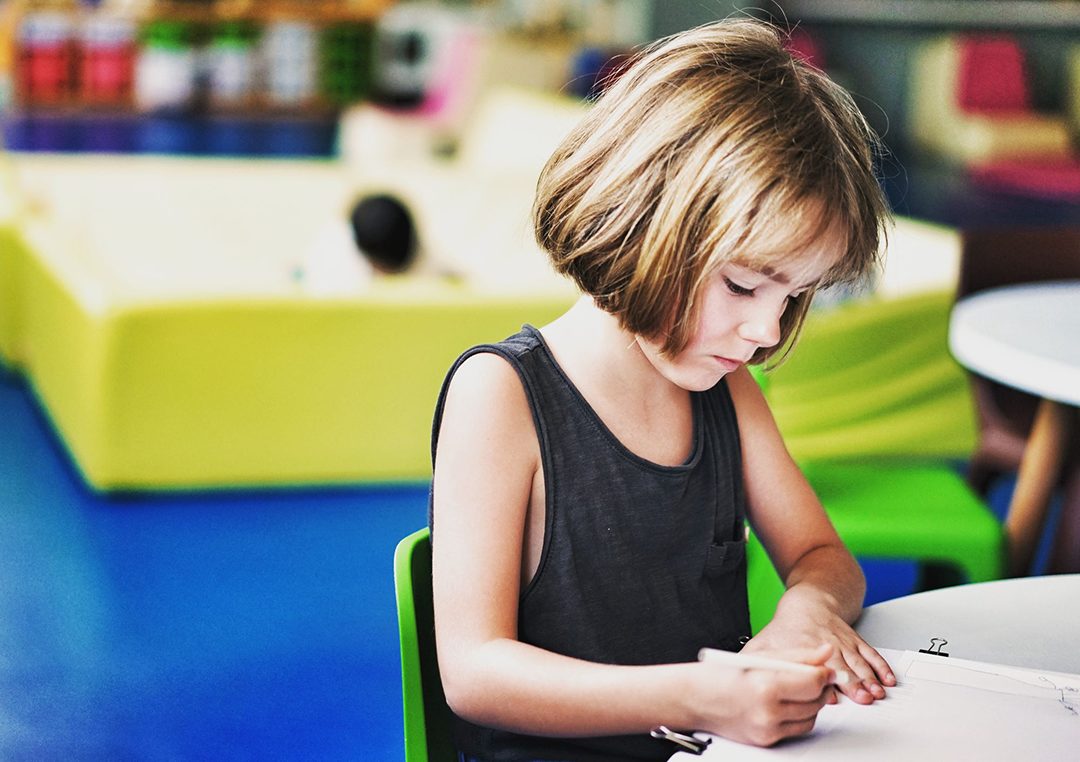
by TutorUp | Apr 3, 2020 | Parents and Home
When it comes to early education, gaps in understanding can occur quickly – and they can persist, even as a student ages. That’s why early intervention, including extra tutoring or one-on-one homework help, is so important for young learners who struggle with reading or math.
As a parent, you want to make sure your kids are prepared for success. But how do you find the right tutor for your elementary-age student? And how do you ensure your student is making progress?
At TutorUp, we connect you with certified, experienced teachers who specialize in working with students who are still “learning to learn.” Not only have our tutors gone through extensive background checks, but they also understand how to break down big concepts, make learning fun, and encourage students who struggle with motivation.
Here are five qualities you should look for in tutors who work with elementary students – and the questions you should ask your tutor right from the start.
1. Does your tutor have experience teaching or tutoring concepts in your student’s age range?
In elementary school math and reading, teachers tackle big concepts in manageable chunks, and each lesson builds on the last. There’s a big variation in content mastery between each year, too. For example, the way a kindergarten teacher tackles math concepts will look pretty different from the math concepts at work in a second-grade teacher’s classroom – but all the concepts in K-3 build on and reinforce one another.
Young learners who struggle with elementary school math and reading often get stuck on mastering the basic concepts they’ll need to build on later. Look for a tutor who understands how to teach the concepts for your student’s particular age group – and who can potentially look backward to help your student master a concept they might have struggled with in an earlier year.
Questions to ask your tutor:
- What kind of experience do you have teaching addition, subtraction, or multiples to students who struggle with these concepts?
- Tell me about a time you helped a student who struggled with learning to read. What did you do to help?
2. How does your tutor break down concepts for young learners?
If your elementary-age student needs more help tackling basic concepts in reading and math, it’s likely your teacher has already alerted you. Your teacher can be a great resource for your tutor, too, and can help your tutor understand which concepts need more practice and reinforcement.
“For tutoring to be effective, the tutor needs to have contact with the classroom teacher in order to discuss the current curriculum and classroom goals, teaching styles and practices, and gaps the teacher is seeing in the school,”
Shannon Keeny, a Baltimore-based private tutor, explained to PBS.org.
“The tutor should support the learning in the classroom by reteaching or accelerating,” she added. “The tutor becomes an advocate for the student’s learning for the school and a support for the parents.”
At TutorUp, we make it easy to put your tutor in contact with your student’s teacher to make tutoring sessions even more effective. This is especially important for elementary-age students who need more practice with basic concepts before they can tackle related or advanced concepts in reading and math.
Questions to ask your tutor:
- Tell me about a time you realized a student needed to back up and practice a concept from earlier in the curriculum, or the prior year’s instruction. How did you shift your tutoring plan?
- How would you work with a student’s teacher to determine which concepts need more practice or reinforcement?
3. What does your tutor do to help students who are tired, frustrated, or stuck?
Tutoring elementary school students requires a special kind of patience. Remember: your student just spent eight hours in a classroom, working hard or perhaps even feeling frustrated by not understanding some of the tasks in front of them. They’re ready to run around, be social, play, or just plain rest with Mom and Dad.
Your tutor will have to be patient enough to break down concepts for an elementary-age student and to deal with a waning attention span. While you want to encourage both your tutor and your student to set goals and get work done, understand that working in shorter bursts, taking breaks, and making it fun can all help make tutoring more effective in the long run.
Questions to ask your tutor:
- What do you do when you sense that your student might be struggling with a concept or hitting a wall?
- Tell me about a time you changed your teaching style to make sure a student understood the concept you were trying to teach.
4. How does your tutor make learning fun and engaging?
Elementary students are often curious and engaged in the learning process, especially when teachers incorporate song, physical objects, art, or movement. While your tutor might not feel comfortable breaking out a guitar and singing about multiples, they should have a plan for making tutoring time fun and engaging.
Look for tutors who have experience with project-based learning, learning games and technology, or creating math and reading-related art projects as a way to break up sessions solely focused on practice or drilling. Ideally, your tutor will find a balance between reinforcing concept mastery and encouraging playfulness that works best for you and your student.
Questions to ask your tutor:
- What experience do you have with project-based learning?
- How would you make one-on-one reading time or math practice more engaging?
- How do you engage physical, auditory, and/or visual learners?
5. What does your tutor do to encourage students who struggle?
Every student needs encouragement, especially if they’re spending extra time with a tutor or need one-on-one homework help. Look for tutors who understand what will feel like a big “win” for your student, especially as they begin to master concepts that will help them catch up with the rest of their classmates.
Just as you would ideally sit down with your tutor to establish tutoring goals, consider using learning-centered rewards, too. Maybe a 30-minute one-on-one reading session with a tutor earns your student a 20-minute break. Or maybe a positive tutoring report means your student gets to pick the next book for reading time based on their own interests and passions, rather than reading level.
Whatever form your tutor’s encouragement takes, make sure you’ve found someone who is sensitive to positive reinforcement, and who will work with you and your student to create the best possible environment for learning.
Questions to ask your tutor:
- How do you encourage students to keep trying even if they feel frustrated?
- What kinds of positive reinforcement do you use most often in your tutoring sessions?

